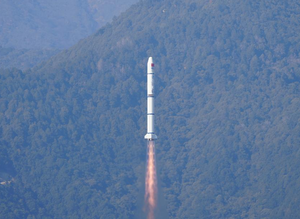
Jan 9, 2024
China launches Einstein Probe into orbit!
On the 9th of January at 15:03 pm, Beijing Time, a Long March 2C lifted off from the Xichang Satellite Launch Center carrying the Einstein Probe to a 600-kilometer low Earth orbit.
The Einstein Probe is believed to weigh 1,450 kilograms and be roughly the size of an SUV once operational in space. The probe will be operated by the Chinese Academy of Sciences but was contributed to by the European Space Agency and the Max Planck Institute for Extraterrestrial Physics.
This launch was also the 506th launch of a Long March series rocket.

What is the Einstein Probe?
The Einstein Probe is a science mission by the Chinese Academy of Sciences in collaboration with the European Space Agency as well as the Max Planck Institute for Extraterrestrial Physics, based in Germany.
The claimed goals of the mission are to discover high-energy transients and monitor variable objects in the sky. It will do this with two instruments, the Wide-field X-ray Telescope and the Follow-up X-ray Telescope.

The planned lifespan of the mission is currently three years with an option to extend it by two years.

The spacecraft has twelve Wide-field X-ray Telescopes onboard and a single Follow-up X-ray Telescope to image the sky.
The Wide-field X-ray Telescope is described by the European Space Agency as follows:
"Inspired by the eyes of lobsters, astronomers have started developing telescopes using similar optics. Lobster eyes are made up of parallel square pores arranged on a sphere that reflect light towards a spherical centre. The Wide-field X-ray Telescope works in a similar way: hundreds of thousands of square tubes guide X-rays down to a CMOS light detector. On the detector the X-rays create a typical ‘plus’ shaped image. A big advantage of this novel technology is that the field of view of the telescope can be extended almost indefinitely. The WXT consists of 12 modules, together creating a view of 3600 square degrees."

The Follow-up X-ray Telescope is once again described by the European Space Agency as follows:
"The Follow-up X-ray Telescope is the more classic Wolter-I type of X-ray telescope. The instrument comprises two identical units, each having a mirror module consisting of 54 gold coated shells. The FXT compensates its narrow field of view with a much higher resolution and much larger light collecting power, making it a great tool to hone in on X-ray sources detected with the WXT’s wide-field view. A thermal baffle at the end of the telescope helps stabilise the temperature of the mirror and protects the instrument against stray X-ray light from reflections of the mirror."

The European Space Agency is contributing ground stations as well as assisting in the testing and collaboration of the Wide-field X-ray Telescope. They also helped test and develop part of the Follow-up X-ray Telescope.
The Max Planck Institute for Extraterrestrial Physics contributed its test facilities for both instruments.



